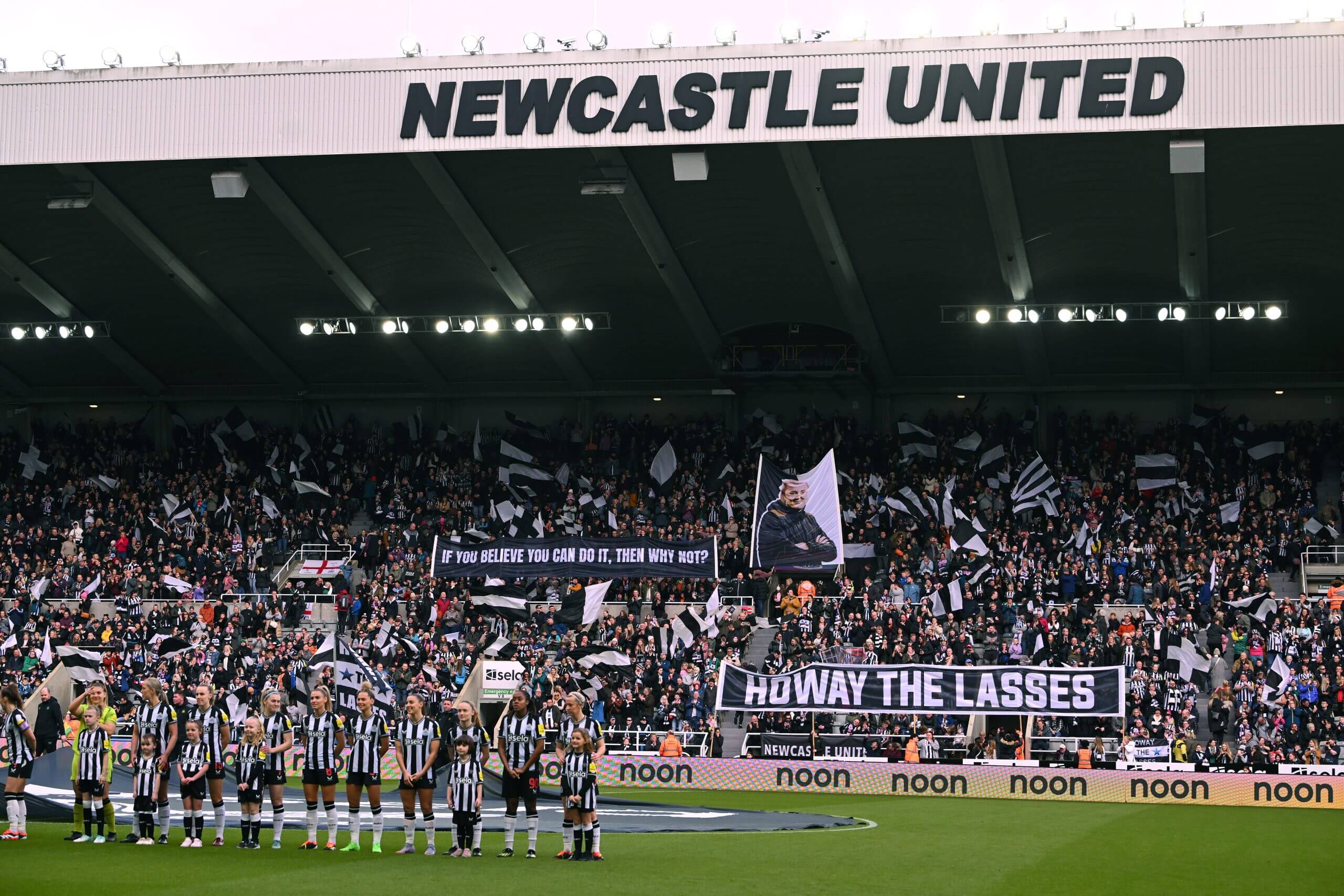For the first time, all 11 games in the Women’s Super League and Women’s Championship this weekend will be played in the home clubs’ ‘main’ grounds.
From Stamford Bridge to Goodison Park via The Valley and Bramall Lane, the top two divisions of the UK women’s game will try to make the most of the final international break of 2024 in men’s football by using the greater capacity at these venues to draw as many fans as possible.
But the initiative also raises questions about the long-term future of where the top women’s teams will play.
Women’s games being staged at a club’s primary stadium is becoming more and more common. Leicester have played all their home matches at the King Power Stadium for several years already, and Aston Villa moved theirs to Villa Park full time this season. The vast majority of Arsenal’s home games in the 2024-25 WSL will be at the Emirates Stadium and Manchester City have upped the number held at the Etihad Stadium to a single-season high of three among their 11 home fixtures.
Some of these moves have come from necessity: Chelsea have had to play their Champions League home games at Stamford Bridge because their smaller ground, 4,800-capacity Kingsmeadow, does not meet UEFA regulations. For other teams, it is a preference: Bristol City host all their home matches at Ashton Gate and had the fifth-highest average attendance in the WSL last season, despite finishing bottom.
But playing at clubs’ main grounds can also pose problems for women’s teams, as Arsenal have found over the past couple of weeks.
Arsenal committed to playing 10 home fixtures at the Emirates this season, which included their three Champions League group stage games. Tickets went on sale for these matches as soon as the draw was completed in September, with Bayern Munich set to visit in the last of those three European ties on Wednesday, December 18.

However, Arsenal men were subsequently drawn at home to Crystal Palace in the Carabao Cup quarter-finals on the same date, with Palace unable to play on a different night (they face arch-rivals Brighton the previous Sunday). A further complication was Tottenham’s men having a home fixture in the same competition the following night — the two north London clubs, with their grounds less than five miles apart, are not allowed to play at home on the same evening for policing reasons.
Arsenal were in a bind. Neither the men’s match nor the women’s one could be moved to another day. As it stands, the club are in negotiations with UEFA as to where the women’s game will be played, with question marks around their smaller ground Meadow Park’s compliance with UEFA regulations. Also, Meadow Park’s 4,500 capacity is far below the number of tickets they would likely have sold at the Emirates for a,
headline European fixture.
The women’s team being shunted out in favour of the men is frustrating, and reflects badly on Arsenal. But Arsenal have been deservedly praised for developing one of the biggest and most engaged fanbases at the Emirates. It highlights a key issue going forward for the women’s game: Is it genuinely feasible for a club’s two senior teams to share grounds in this way?
The other issue that is going to arise moving forward is the size of the venues involved. It is tough for teams to move from playing in grounds that hold only a couple of thousand spectators to arenas with room for tens of thousands, but it is also far from simple to find a venue that sits comfortably between the two extremes.
Brighton are the only WSL team planning a bespoke ground to overcome this issue. Their women’s team currently play at Crawley Town’s 6,000-capacity Broadfield Stadium, over 20 miles from their main Amex Stadium, which seats almost 32,000. The hope is a new ground could be built close to the latter, creating a similar setup to the one at Manchester City, where the 7,000-capacity Joie Stadium, the venue for most of the women’s team’s home games, is just across the road from the Etihad.
But such an option is not going to be available to every club, with those in London particularly hamstrung by the lack of affordable space to build on.

Arsenal are clearly a team who would benefit from a bespoke ground for their women’s side.
Despite sell-out attendances at the 60,000-capacity Emirates for some matches last season, they have struggled to maintain those numbers when playing there on a more regular basis. Arsenal are still attracting huge amounts of fans in terms of the UK women’s game, with recent crowds of 22,467 against Brighton and 25,480 against Everton — matches which do not have the same star value as when Chelsea or Manchester City are the visitors — but in a ground so big, even that many people get somewhat swallowed up by all the surrounding empty seats, which is a shame.
The long-term vision will surely be for the men’s and women’s teams at every club to share the main ground and draw sell-out crowds, week in and week out.
The varied growth of women’s football makes it hard to judge exactly how far away that is from happening, and it will of course be different from one club to another. But it is important to remember that as recently as two years ago, Arsenal’s women would regularly have attendances of only between 1,000 and 2,000 — figures that are unthinkable now. They are best in class when it has come to that but it does show how much things can change, almost overnight.
This weekend might feel like something of a marketing gimmick in terms of putting all 11 games into the main stadiums, but the reality is that which venues teams choose to play in is crucial for the development of the women’s game. The commercial rewards can be huge if you get it right, but it also brings complications clubs have never had to deal with before.
How the women’s game negotiates those could have big implications for the long term.
(Top photo: Aston Villa celebrate in front of rows of empty seats at Villa Park during September’s game against Spurs; Nathan Stirk via Getty Images)





